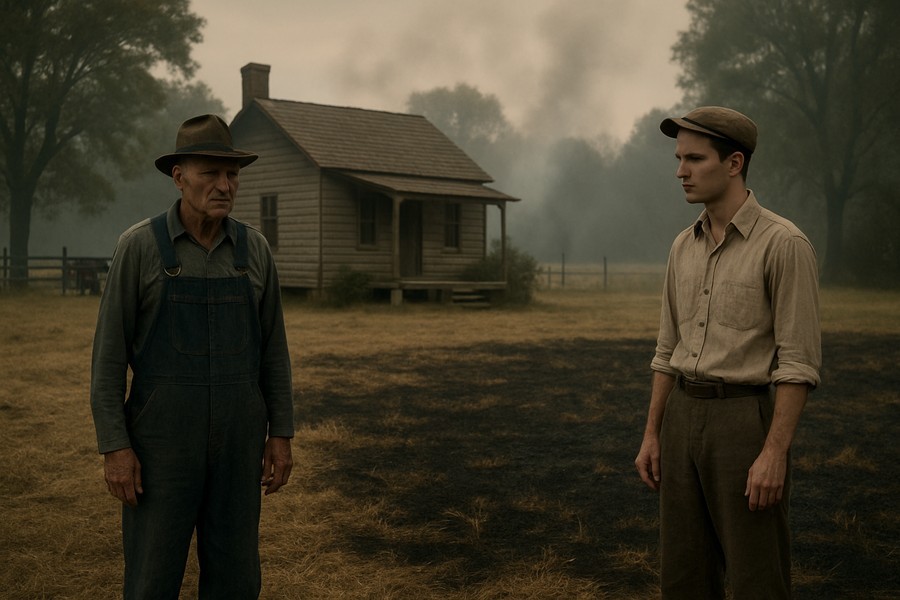
Exploring the Real-Life Story of Notorious Criminal Ed Gein
The recently aired series "Monster" has sparked a renewed interest in the infamous criminal, Ed Gein. Known for his heinous crimes, Gein's life story has served as inspiration for some of the most renowned horror films, including "Psycho," "The Texas Chain Saw Massacre," and "Silence of the Lambs."
Was Gein Responsible for His Brother's Death?
The first episode of "Monster" suggests that Gein may have been responsible for the death of his older brother, Henry. The episode portrays Gein killing Henry with a piece of wood and later staging a brush fire to cover up his crime. However, in reality, no solid evidence supports this theory.
A real brush fire did occur, but it was during the spring, not winter. Henry's body was found badly burned, and the official cause of death was asphyxiation leading to heart failure. Although there were some markings on his body that could have been wounds, authorities at the time concluded that there was no foul play involved. Gein himself never admitted to having a hand in his brother's death.
Gein's Unique Voice
Gein's distinctive voice has been a topic of interest. Actor Charlie Hunnum, who portrays Gein in the series, studied rare recordings of a 70-minute interview with Gein to perfect his character's voice.
Did Gein Have a Romantic Relationship?
Despite being depicted as having a long-standing romantic relationship with a woman named Adeline Watkins in the miniseries, the real-life Adeline clarified that their relationship was more of a friendship. They shared a love for reading, and Gein developed an interest in tribal cultures worldwide. However, their closeness only lasted about seven months, and it wasn't until 1954 that they got to know each other better.
The Gruesome Crimes of Ed Gein
Gein resided in the rural Wisconsin community of Plainfield. He was arrested in November 1957 when the mutilated body of a local store owner, Bernice Worden, was found in his shed. Further investigation revealed the remains of another woman, Mary Hogan, who had been missing for three years, inside his home.
Gein confessed to murdering both women, but he was never put on trial for these crimes or for his admitted grave-robbing. The investigators found human skulls, a lampshade made from human skin, masks made from female faces, and a wearable corset made from a female torso inside his house.
Why Did Gein Confess?
During his interrogation, Gein revealed a complicated relationship with his mother, Augusta, which reportedly led to his desire to become more like a woman. He believed that by wearing the skin of women he exhumed from graves, he could achieve this. The details of his crimes and his mother fixation inspired fictional serial killers like "Buffalo Bill" in "Silence of the Lambs" and Norman Bates in "Psycho."
Who Were Gein's Parents?
Gein's mother Augusta was a devoutly religious woman who believed that sin was rampant in society. His father George, on the other hand, struggled with various jobs and was often unsuccessful. Augusta was the dominant figure in the family, and after his father's death in 1940, Gein became his mother's primary caretaker. When she died in 1945, Gein was left to fend for himself.
What Happened During Gein's Trials?
Gein was tried for the murder of Bernice Worden and pleaded not guilty due to insanity. Deemed unfit to stand trial, he was sent to a hospital for the criminally insane. After being deemed fit for trial in 1968, Gein was found guilty of murder but was again declared not guilty due to insanity in a subsequent proceeding.
What Became of Ed Gein?
Gein spent the rest of his life in a mental health institute and died there in 1984 from respiratory failure linked to lung cancer at the age of 77.
Where Was Gein From?
Born in La Crosse, Wisconsin, in 1906, Gein and his family moved to a secluded farm in Plainfield, central Wisconsin, when he was a child.
